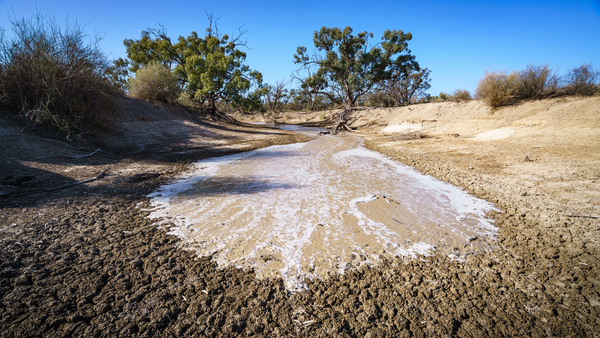Rivers and wetlands get dry naturally too. So why do we put water into the environment when nature, and regulation of rivers, has turned off the tap?
In last year’s Reflections, the question we answered for our community was 'Why do we water when it is wet?’ It’s also important to ask the same questions when it’s dry, especially given competing demands for water.
On one level, it is apparent that during dry years environmental flows are needed to sustain parched wetlands and rivers and refresh stagnant pools. However, when water becomes scarce, some people question why we still release water for the environment at the same time water is needed for irrigated farming.
The artificial drought
Rain or shine, many of Victoria’s rivers, floodplains and wetlands constantly experience an artificial drought. This is because Victoria’s waterways have continued to be modified as the population has grown, to provide water for food production, towns and industry. The water in rivers is now pooled up in water storages and flow is controlled by weirs and other mechanisms. In some rivers, up to half of the water that would have naturally flowed in them is removed each year for farms, homes and businesses.
Even when it’s wet, these rivers and wetlands get less water than they would naturally. But this impact is far greater when it’s dry, which can mean real problems for our waterways and the plants, animals and communities that rely on them. Dams allow water to be captured in a wet year and kept for use when it’s dry. This is why the VEWH had high amounts of water for the environment in 2017-18 even when it wasn’t raining much. Environmental flow managers use that water to build the resilience of waterways. This is critical, so that rivers, wetlands and the plants and animals that rely on them can better cope when it gets really dry – in conditions like the Millennium Drought – when there is little rain and littlewater in storage.
Building on the good start
To support strong, healthy rivers and wetlands, water for the environment was delivered in 2017-18 to build upon the benefits the previous wet year provided. One wet year does not make the environment healthy. It is nature’s way of providing a boost, but good follow-up years are needed to build on the gains made and to ensure the benefits from past watering is not lost. The best outcome for the environment is when these good follow-up years bridge the gap between floods.
As dry conditions through winter and spring unfolded in 2017-18, water for the environment was delivered across the landscape, to rivers, wetlands and floodplains. In many cases, this meant watering (topping up) wetlands and floodplains that were flooded the year before.
In northern Victoria, environmental flows were delivered to new river red gums and black box trees that started growing after the 2016-17 floods to help them become established and better able to survive the next dry period.
Likewise, environmental flows in rivers provided ideal conditions for native fish that recruited in the floods to disperse and boost populations across the whole river system. In places like the Wimmera River, platypus populations had reduced their distribution to the healthiest sections of waterways. Environmental flows have now supported the dispersal of platypus back into sections of waterways that have recovered by bridging the gap between wetter years.
Planning for all conditions
The VEWH shares community concerns about water scarcity and supply during dry conditions.
We keep a close eye on climate predictions and weather conditions through the seasons to make the most of any water used to protect our environment.
An extensive amount of planning goes into preparing for drought, dry, average and wet scenarios. In the same way rainfall patterns influence how people water their gardens or paddocks, different climatic conditions influence how we manage water for the environment.
In any given year, the need for environmental flows, as outlined in the annual seasonal watering plan, can be higher than the available water. Therefore, it is important to consider where water is most needed and how it can be used most efficiently to achieve the best environmental outcomes.
A healthy environment underpins healthy communities, and in dry conditions, waterways and wetlands are a haven for plants and animals, as well as people.

Neds Corner watering, by Mallee CMA